The big day: New design twists for the trip down the aisle
by charlene_voisin | May 1, 2014 9:00 am
By Jacquie De Almeida
  ÂBridal jewellery tends to be one of those categories you can take to the bank. Regardless of the season or economic landscape, people will always get married and need symbols of their love fashioned from precious stones and metals to do it. The world of jewellery is continually in flux, and the bridal category is no exception. From couples going Dutch to the ‘man-gagement’ ring, here are a few trends to keep an eye on for 2014.
The ‘man-gagement’ ring
It seems a growing number of men are willing to let the woman “put a ring on it.” According to Engagement 101’s 2013 Just-Engaged couple survey, 71 per cent of men “would be open to wearing an engagement ring for guys, called a man-gagement ring.” While it’s true this trend may not yet be taking off like gangbusters, there’s something to be said for equality. Why shouldn’t men wear pre-wedding day jewellery that tells the world they’re taken, just as a woman does? In some South American countries, man-gagement rings are the norm. Canadian singer Michael Bublé proudly showed off his ring after popping the question to Argentine actress Luisana Loreley Lopilato de la Torre.
Just a few years ago, a similar survey reported 17 per cent of men would consider sporting an engagement ring, notes Amanda Gizzi, spokesperson for Jewelry Information Center (JIC). She agrees the concept of equality in a relationship seems to be the drawing card for most couples.
“People like the idea that the engagement period is meant to be acknowledged by both parties in a relationship,” Gizzi explains. “A ring is always given to the woman and that’s the way it’s always been done. But once people start to become aware of something new or different, they are open to it. High-profile men like Michael Bublé doing this makes a big difference in how quickly the trend takes off”¦ I think it’s just a matter of time before we see man-gagement rings become more prevalent.”
Where some men will wear a man-gagement ring on their right hand and move it over to their left once married, others buy an entirely different ring to be worn as a wedding band. Gizzi says she’s even heard of some men getting a second, thinner band to wear next to the man-gagement ring, although she admits that’s very rare.
With more and more couples these days shopping for an engagement ring together, a retailer has the perfect opportunity to bring up the topic of a little pre-wedding bling for the groom-to-be.
“It all comes down to education,” Gizzi explains. “Without it, man-gagement rings are a foreign concept. As people start to share it with their friends, it will take off a little bit faster.”
Of course, if the woman pops the question, a man-gagement ring is a no-brainer.
Going Dutch
Sure, every little girl dreams about the day she’s presented with an engagement ring. The cut, the setting, the overall style. It’s all pretty much been decided before the whispers of ‘I do’ are even heard. But with more women earning bigger bucks, and in some cases, being the breadwinners of the household, it’s no wonder they may be willing to chip in to get the ring of their dreams when their betrothed can’t afford it.
According to a 2013 survey by The Knot, 46 per cent of women said they would consider contributing to the cost of their ring, particularly when their partner is less financially stable.
It seems logical when you think about it—once married, couples eventually share expenses anyway, so women do pay for their own engagement rings indirectly. Why not pitch in from the get-go, even more so since couples these days tend to shop for the ring together.
Kate Peterson, president and chief executive officer (CEO) of Performance Concepts, says a shift in family dynamics over the last 30 years or so may explain why some women are willing to help pay for their engagement bling.
“What we’re dealing with is an entire population of people who grew up in either two-income or female head-of-household homes,” she explains. “Mom and dad both worked, so family decisions for major purchases were joint. It wasn’t ‘my money’ and ‘your money.’ It was ‘our money.’ When someone at an engagement counter pulls out a credit card, nobody thinks about who is paying the bill.”
The purpose of an engagement ring has also changed. At one point, it was meant to provide a bride with financial security if the wedding were to be called off. Over the years, it came to symbolize the groom-to-be’s commitment to his girlfriend. However, even that has changed in more recent times.
“What’s going on with younger people today is the engagement ring is their symbol jointly to the rest of the world. The engagement ring stopped being a gift a long time ago. It’s a joint purchase now [like anything else of significant value they buy as a couple.]”
While some men prefer to surprise their girlfriends with a ring, other couples plan well in advance of when they become engaged, and subsequently, pay their jeweller a visit together. Weddingbells’ 2013 annual reader survey found 89 per cent of brides had input on how much their ring cost.
So how does a retailer upsell a diamond without potentially embarrassing a groom who may not be able to afford it?
“There are very subtle ways to handle this,” Peterson says. “Couples tend to be very innovative about finding ways to get what they really want. What it comes down to for the retailer is asking the couple to look at all their resources on one side of the equation and all of the things that are most important to them in the diamond and figuring out how to make those two things match. When you say it like that, it’s a conversation about all of their resources, rather than suggesting the bride help pay for the stone. It’s a matter of pointing out that a joint purchase is quite normal these days.”
Same-sex bridal jewellery
As an identifiable market segment, the Lesbian, Gay, Bisexual, and Transgendered (LGBT) community is larger than any other in Canada; however, for the most part, it remains untapped as a buying demographic relative to its size.
According to a recent joint study by the International Gay and Lesbian Chamber of Commerce and the National Post, the LGBT sector is worth just over $100 billion, which equates to 10 per cent of Canada’s entire consumer market. Consider also that the majority of same-sex couples are dual-income households, with no children. The spending power is quite substantial, which is why some big-name companies in sectors like the auto industry are engaged in direct marketing.
Although it’s been nearly nine years since Canada became the fourth country in the world to legalize same-sex marriage, the jewellery industry remains traditional in its views for the most part and it shows.
Robin Gambhir, co-founder of Fair Trade Jewellery Co. in Toronto, says same-sex couples shopping for engagement or wedding rings simply prefer dealing with gay-friendly jewellers.
“The key to this market is treating people like people, instead of judging them,” Gambhir explains. “In general, when anyone walks into a jewellery store, they feel judged, whether it’s for how they’re dressed or their perceived income. When you add sexual orientation onto that, it becomes another way in which someone feels judged. Nobody wants to feel like they’re different and being treated that way. If you have any problems with [same-sex relationships], it just comes out through your body language. The only way to sell into this market is to actually treat same-sex couples as clients and see them as two people who are in love.”
Vancouver-based jeweller Benée Rubin says same-sex bridal jewellery is growing quite rapidly in Canada. Although she’s been creating custom jewellery for gay couples for years, she says it’s such a strong category that she is designing exclusive collections that will sit alongside his-and-hers rings in a retailer’s case. And while carrying a bridal line for gay and lesbian couples doesn’t necessarily rule out bringing in a custom designer to tweak a design here and there, at the very least, it gets the conversation started.
“If something isn’t in the market, people can’t buy it,” Rubin says. “We’ve had so long in the straight world to define how things are done for weddings. There’s so much advertising and money that goes into this. Bridal jewellery for same-sex couples is a new business and very few people are focusing on it.”
So what are some of the standout looks Rubin’s noted over the years? Among her fashion-conscious male clients, artistic rings with detail, subtlety, and style are in demand, while lesbian couples lean toward jewellery that is wearable and less delicate than traditional bridal jewellery for women. “We’re doing things that are feminine in scale and have some feminine detail, but would not be considered feminine,” she says.
Pre-owned engagement rings
No doubt, vintage has been one of the biggest design trends in engagement rings over the last few years, with brides-to-be gravitating toward the estate counter. But there’s something to be said about pre-owned engagement rings that aren’t necessarily vintage. A quick Google search results in several online spaces where the ditched or ditcher can unload a ring and with it, the memories of a relationship gone bad. While some couples may balk at the thought of buying what they perceive to be an unlucky charm of sorts laden with negative energy, others are quite happy to purchase something in perfectly good condition for a fraction of what it would cost new. So is this an untapped market?
Frank Damiani, owner of Damiani Jewellers in Woodbridge, Ont., sees it as a service he can provide his newly-on-the-market male clients. It’s not just about making a profit, he notes, but satisfying customers’ needs.
“It’s interesting that a man in love needs to buy a diamond ring, and a man out of love needs to get rid of a diamond ring,” he says, adding there’s a preference for dealing with a reputable jeweller rather than a pawn shop.
Although new product accounts for 99 per cent of his sales, Damiani says he is not opposed to buying back an engagement ring he originally sold the customer who will put the money toward, say a watch. The client gets rid of something he’s unwilling to hold onto, while treating himself to something he’d rather have.
Damiani says that in most instances, the diamond is perfectly fine, in which case, he sells it as a loose stone with its original certificate. If the ring is current and from a brand-name jeweller or if it’s a custom piece that is worth leaving as-is, he places it in the estate case and sells it as pre-owned. In some cases, its new owner can see up to a 30 per cent difference in price from a new piece, Damiani notes.
“For some people, the negative vibe that may be attached to the ring doesn’t even enter their mind,” he adds. “They’re just looking for the most bang for their buck and the best ring they can buy. And then there are others who wouldn’t dream of buying a used ring. There are some people who just want to buy new and there are others who just want to look for value or something unique that you can’t find brand new.”
You could say one person’s ‘something old’ is another’s ‘something new.’
What women want
Speaking of vintage”¦ Shows like Downton Abbey are inspiring brides everywhere to pick up the Edwardian look of European-cut diamonds, hand-engraved details, and lacy filigree. And who says one halo is enough? These days, two halos are definitely better than one. Not only does the ring look vintage, but brides appreciate how much bigger the centre diamond appears to be. And what is at the centre of those halos? Brides are opting for fancies like cushion and emerald cuts.
As far as bridal trends go, white metals are still tops with brides. However, Lisa Malbranck, co-owner of Winnipeg-based Diamond Gallery, says yellow gold is making a comeback, while its rosy-hued counterpart is gaining ground.
“If you’re going to do gold, why not do it in its natural colour,” she explains. “A small portion of brides are looking for something a little unusual and they are choosing something unique for the colour of the metal, as well. This doesn’t necessarily have to be for the engagement ring, but sometimes people will choose a rose or yellow gold wedding band as a way to change things up and have a stackable look to their bridal set.”
Toronto-based custom designer Shelly Purdy says an ‘all-in-one ring’ is one standout trend. Rather than picking up both an engagement ring and wedding band, some women are happy to get one ring with a bit more ‘oomph.’ She notes this is particularly true for female couples, mature brides, or those going into their second marriages—they’ve done the two-ring thing and this time around, they are looking for just as much pizzazz, albeit, in a one-ring package.
In some cases, Purdy says she’s had clients who have replaced their engagement and wedding rings with something that better reflects who they are as a person today.
“People are looking at their lifestyle and see their original rings as maybe being too simple or a little impractical,” she says. “They want something a little more sophisticated and substantial—they want it to make a statement.”
- [Image]: http://www.jewellerybusiness.com/wp-content/uploads/2015/12/bigstock-Romantic-Bride-And-Groom-Embra-50069222.jpg
- [Image]: http://www.jewellerybusiness.com/wp-content/uploads/2015/12/LG108.jpg
- [Image]: http://www.jewellerybusiness.com/wp-content/uploads/2015/12/FH8-1449.jpg
- [Image]: http://www.jewellerybusiness.com/wp-content/uploads/2015/12/ht2605rd95_10.jpg
- [Image]: http://www.jewellerybusiness.com/wp-content/uploads/2015/12/M2297R720_QR2.jpg
- [Image]: http://www.jewellerybusiness.com/wp-content/uploads/2015/12/new-sets-008.jpg
- [Image]: http://www.jewellerybusiness.com/wp-content/uploads/2015/12/dreamstime_m_35293176.jpg
- [Image]: http://www.jewellerybusiness.com/wp-content/uploads/2015/12/31-919ERR-E.jpg
- [Image]: http://www.jewellerybusiness.com/wp-content/uploads/2015/12/1.-Shelly-Purdy-rose-gold-ring.jpg
Source URL: https://www.jewellerybusiness.com/features/the-big-day-new-design-twists-for-the-trip-down-the-aisle/
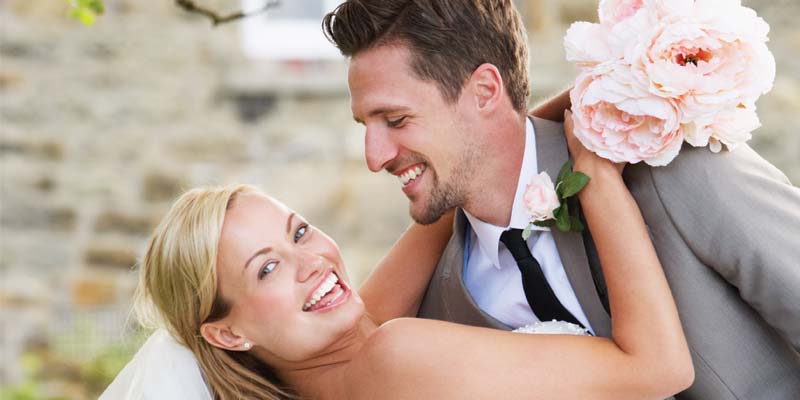 [1]
[1]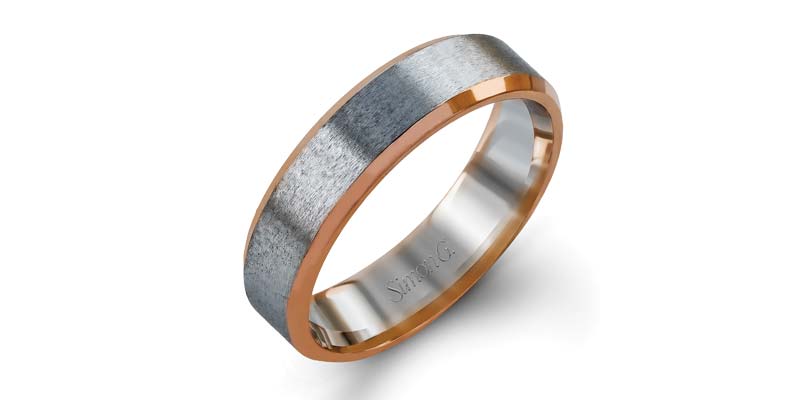 [2]
[2]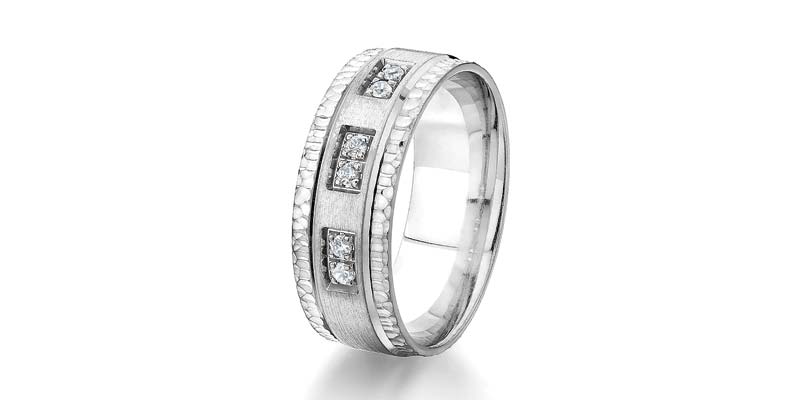 [3]
[3]


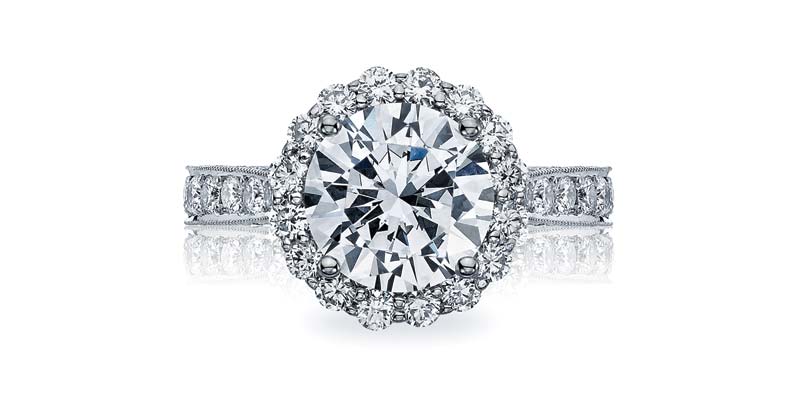 [4]
[4]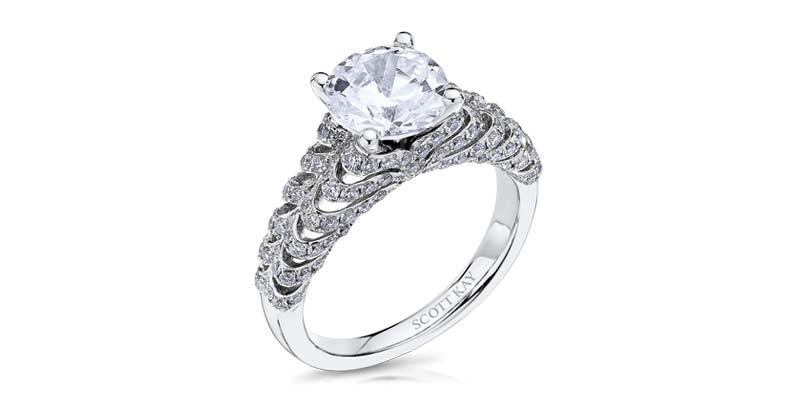 [5]
[5]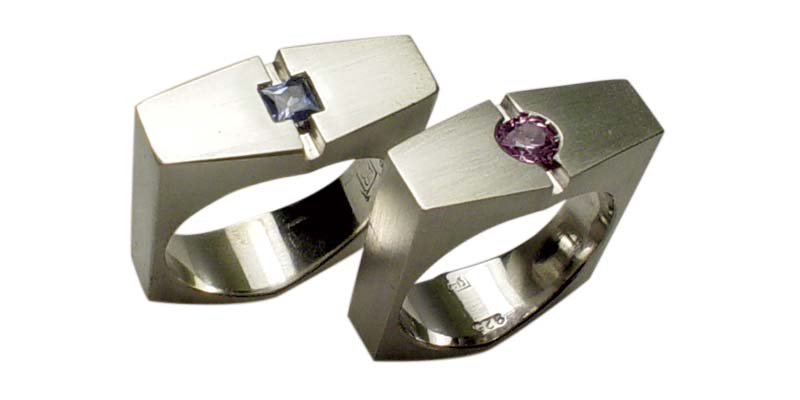 [6]
[6]


 [7]
[7]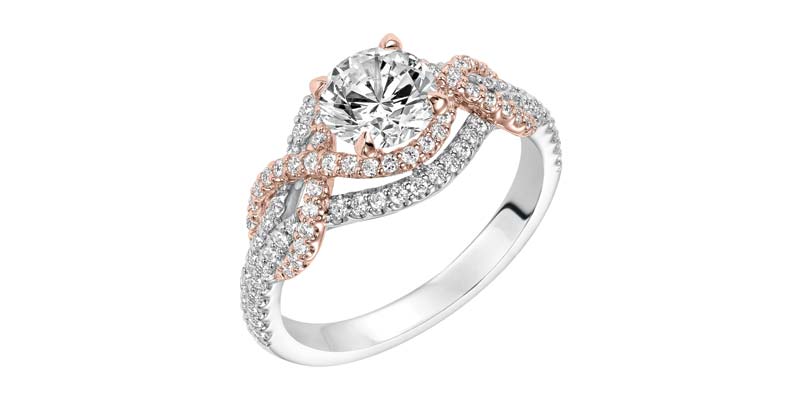 [8]
[8]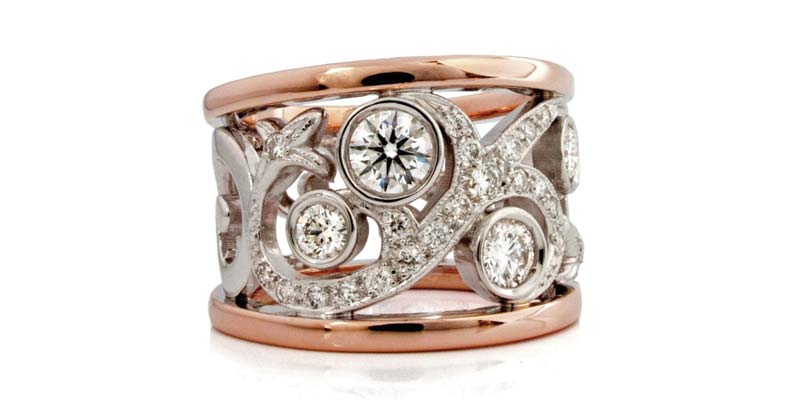 [9]
[9]



